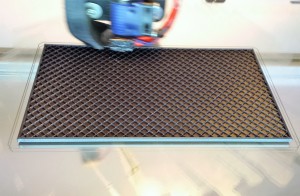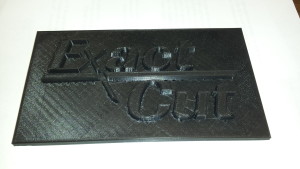SPRING EDITION, 2016
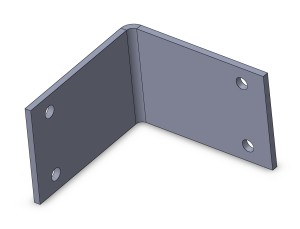 This is the third newsletter in a series on 3D printing or “additive manufacturing”. We have discussed what is additive manufacturing and the details of how to 3D print. This newsletter looks at the design opportunities that additive manufacturing offer.
This is the third newsletter in a series on 3D printing or “additive manufacturing”. We have discussed what is additive manufacturing and the details of how to 3D print. This newsletter looks at the design opportunities that additive manufacturing offer.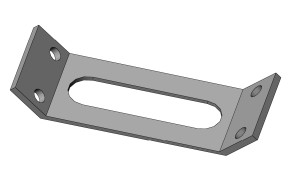
The first big change is that additive manufacturing affects the way you think about the design of a part. In our waterjet and laser cutting business, more holes translate into more time and expense. Therefore, starting with a plate and only cutting out what you need is the most economical. In additive manufacturing, not printing means less time and expense. Therefore, a design should only focus on what is needed for the part to work and not how it is traditionally made. Take the example of a simple bracket with four holes. This is traditionally cut as a rectangle with four holes and then bent into an “L”. However, the only relevant design considerations are the two sets of holes being 90 degrees from each other and a certain distance apart. With a 3D printed part we can reimagine the parts as figure 2. Less material means less time and money to print.
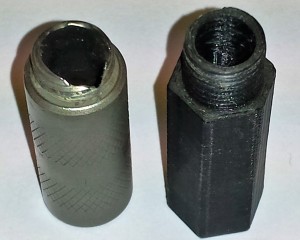 When designing a part many of the traditional shapes are no longer a limit on what you make. We made a tube to hold our abrasive line with our 3D printer. The worn out tube was cylindrical which was easy to make on a lathe, but hard to install. Using a few clicks, we adjusted the design with a hex profile to make it easier to install.
When designing a part many of the traditional shapes are no longer a limit on what you make. We made a tube to hold our abrasive line with our 3D printer. The worn out tube was cylindrical which was easy to make on a lathe, but hard to install. Using a few clicks, we adjusted the design with a hex profile to make it easier to install.
Another design consideration we consider is what orientation to print the item. Overhanging parts can be supported with a small breakaway section, but the best solution is to turn the part so it does not have any overhang. See the picture for two parts being printed. The part on the left is not printing correctly because of the overhang of material. The part on the right is printing correctly because it is vertical with almost no overhang.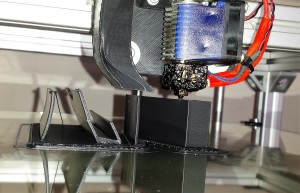
One of the great options with building parts with additive manufacturing is to fill the inside of a part with air, this is called infilling. The amount of infill can be adjusted from 10 to 100%, see an example of 20% infill. Infilling reduces the weight, time, and expense. The part is less sturdy, but often the trade-off is an easy decision to make. The next picture shows the final part and the exterior of the part is solid while the insides are nearly hollow.
Additive manufacturing creates many opportunities for creative designing to solve problems that traditional manufacturing struggles with. Let Exact Cut help you with either traditional water-jet or laser cutting, or the new wave of additive manufacturing.
